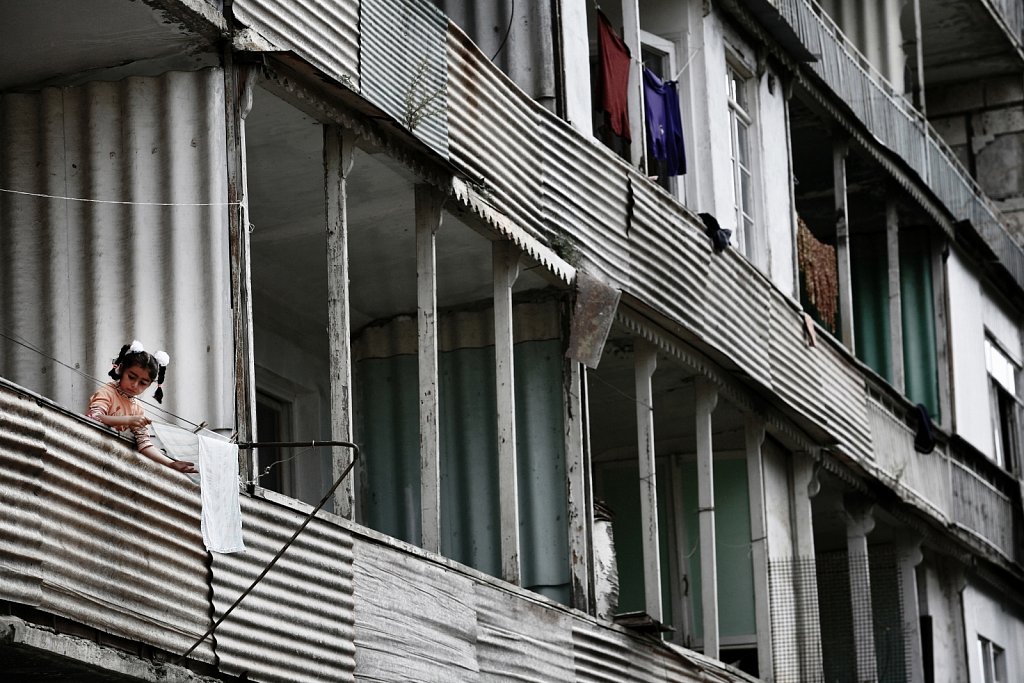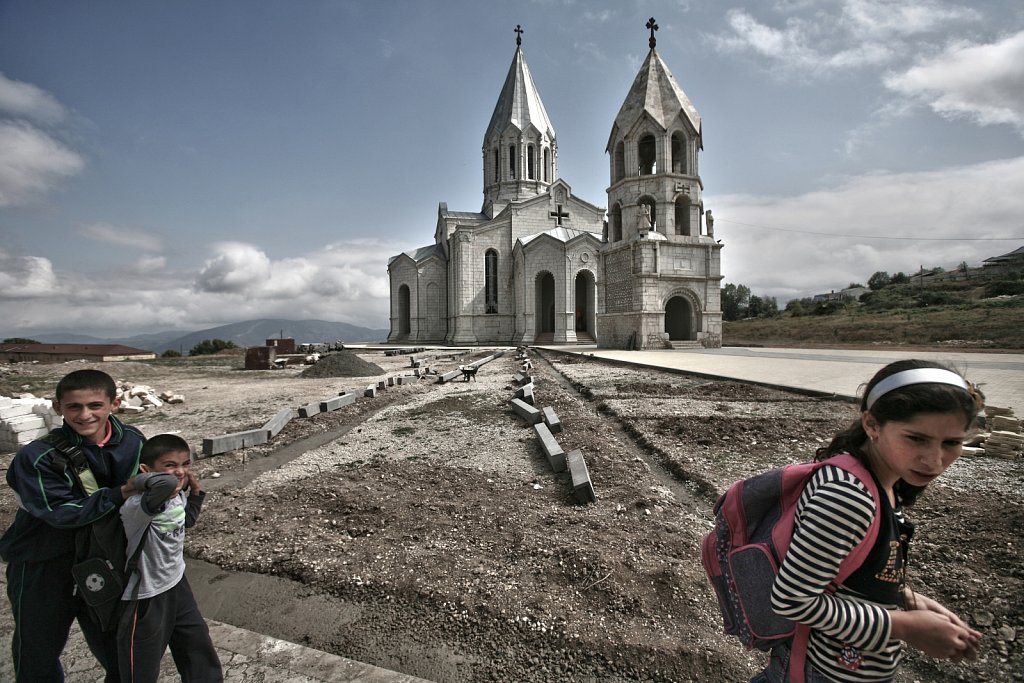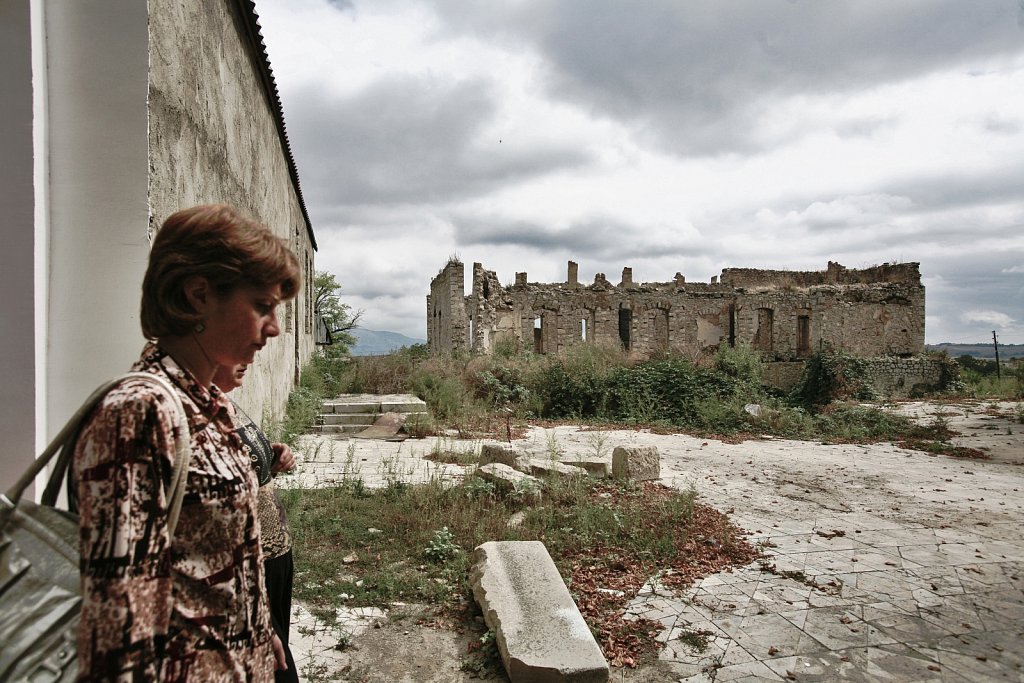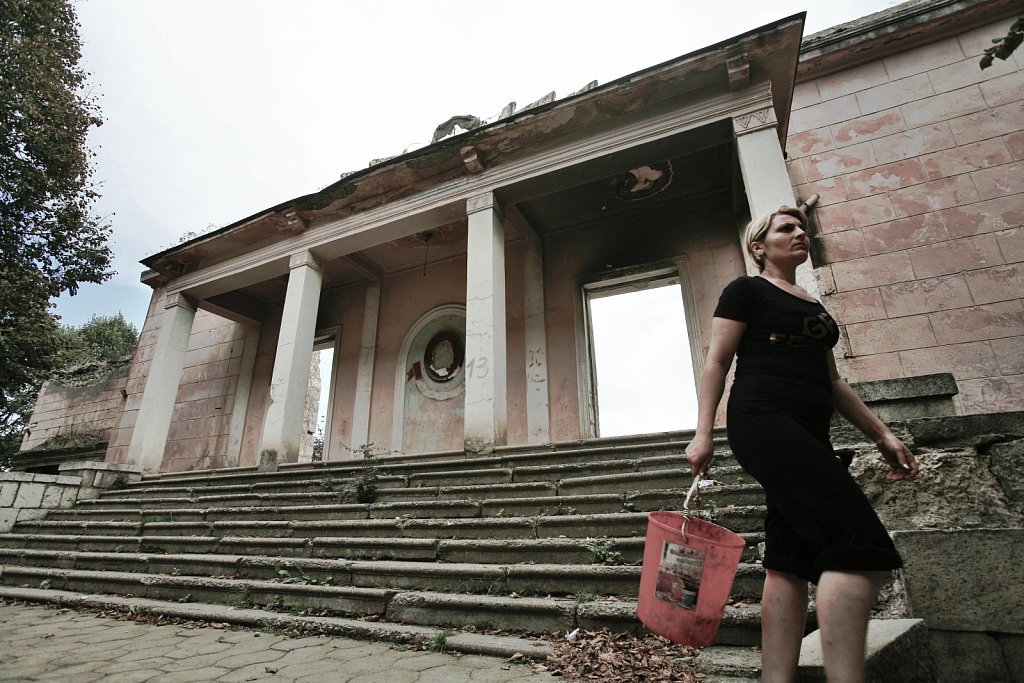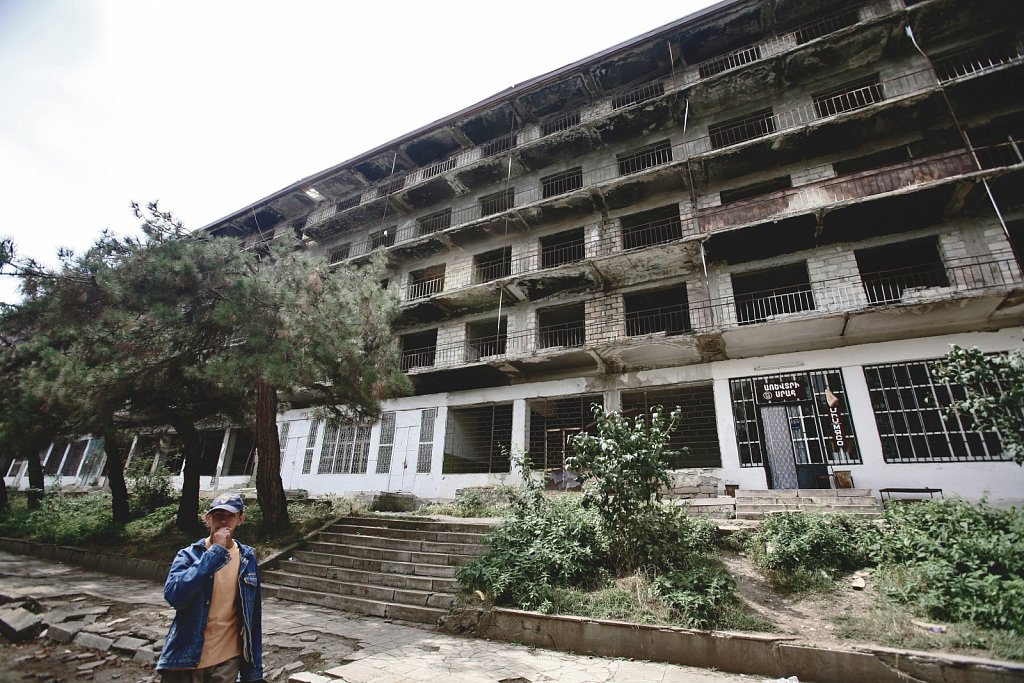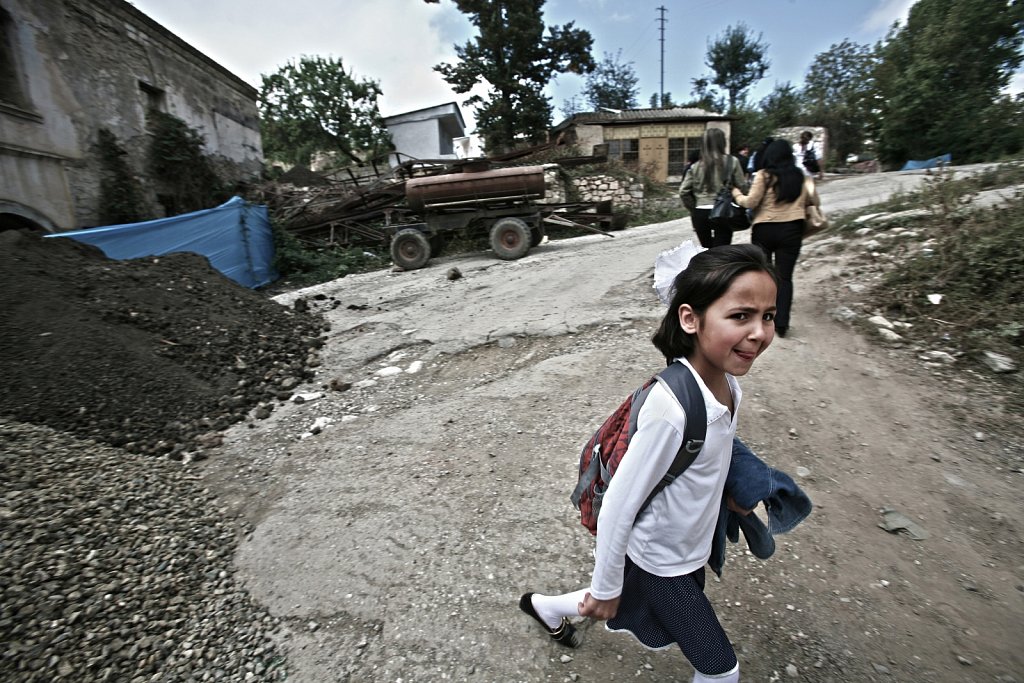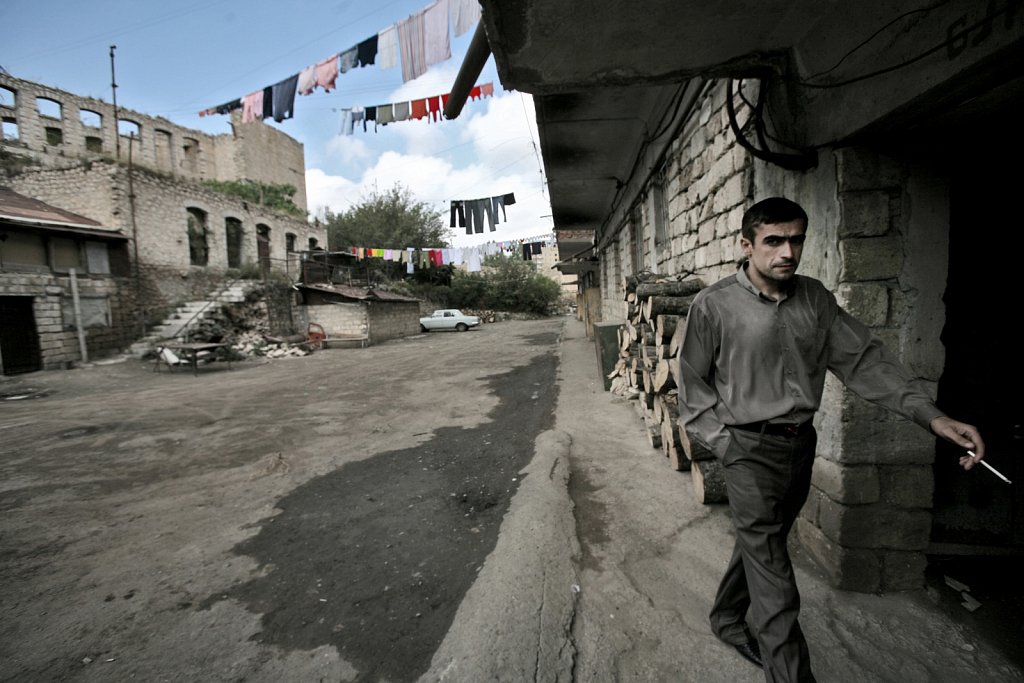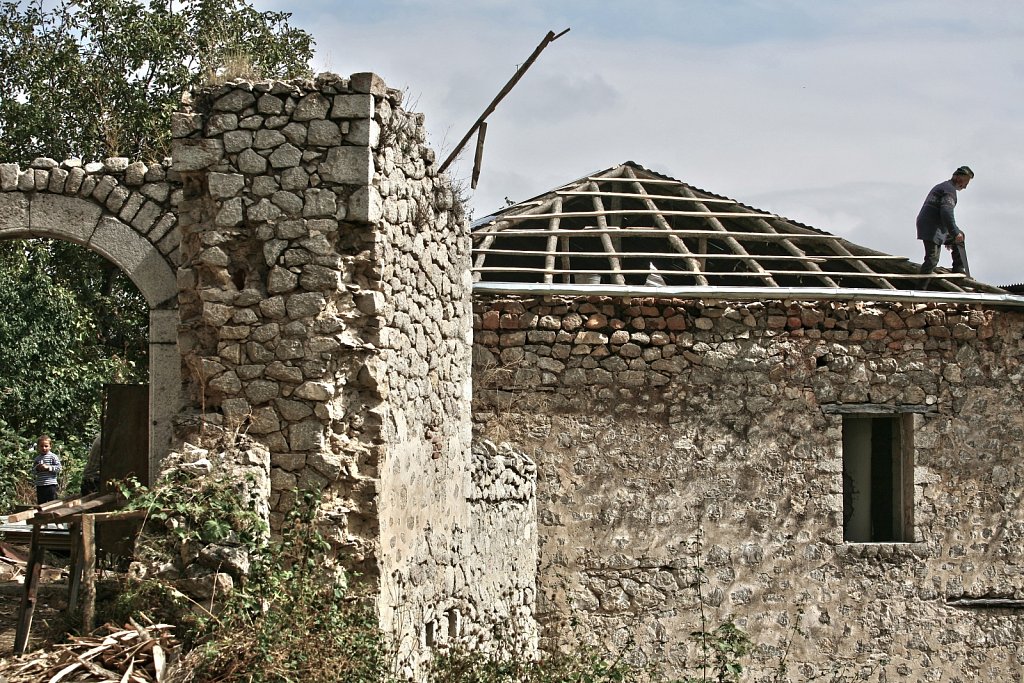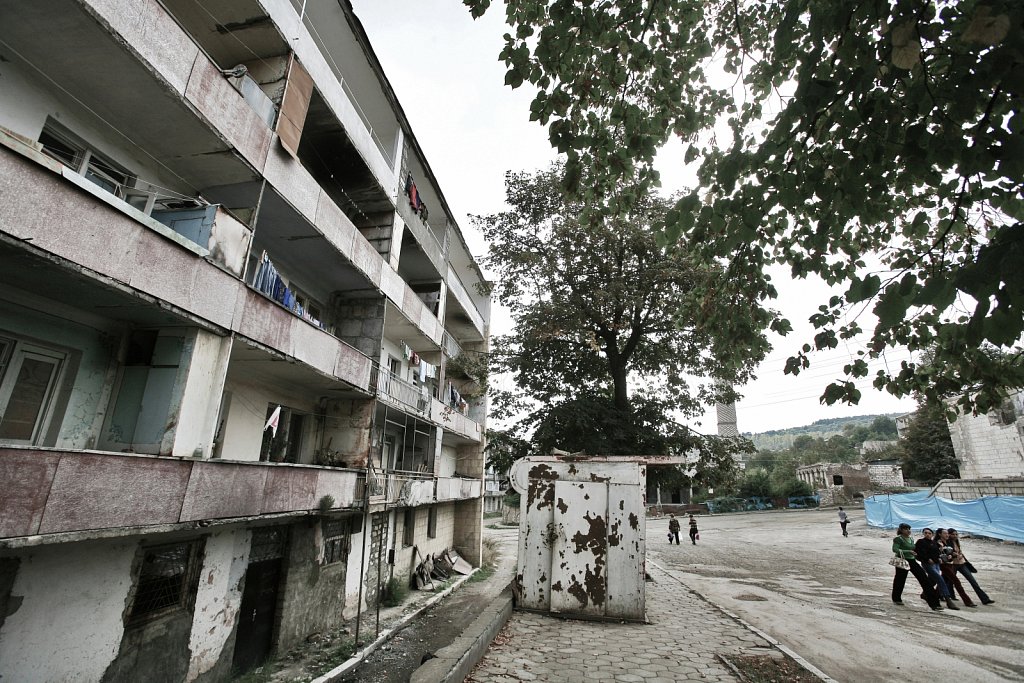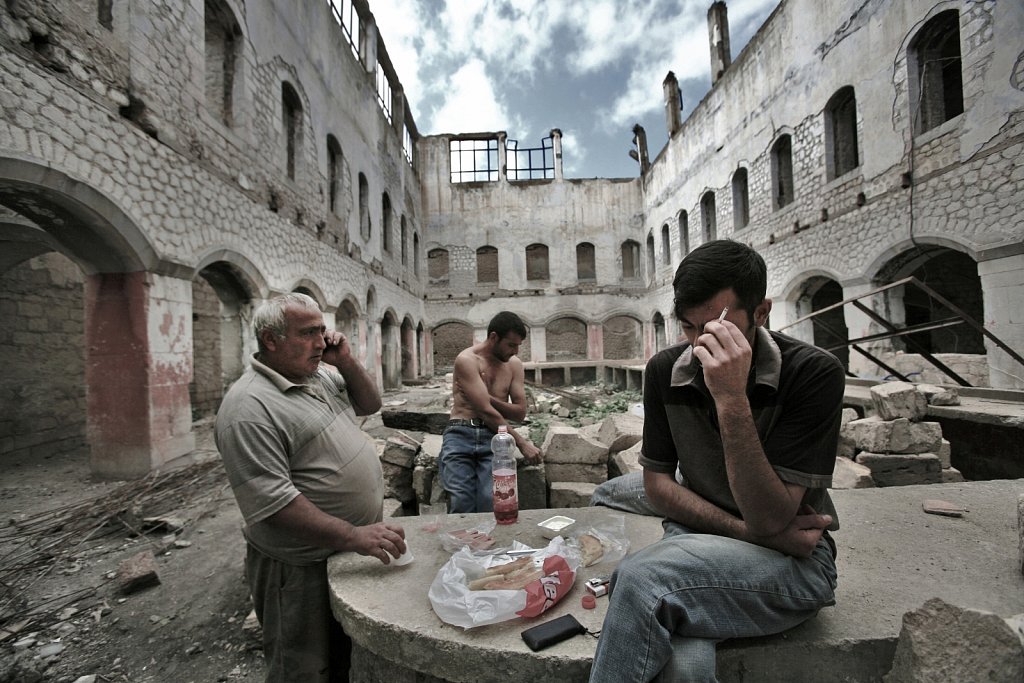
Nagorno-Karabakh
A group of workers rests during the lunch break inside a ruined building in the city of Shushi. Before the Nagorno-Karabakh War the city was the main cultural center of Karabakh, also known as “Paris of the Caucasus”. With more than three quarters of the buildings being destroyed during the war, the city has begun the reconstruction of historical buildings with a special architectural and historical value. Shushi, Nagorno-Karabakh, 18 September 2008.
Nagorno-Karabakh
A little girl hangs the laundry for drying at the balcony of an apartment block in the city of Shushi. The city is considered the second largest in Nagorno-Karabakh after the capital of Stepanakert, as size and population density. Before the Nagorno-Karabakh War it was the main cultural center. Shushi, Nagorno-Karabakh, 18 September 2008.
Nagorno-Karabakh
Children play near the Ghazanchetsots Cathedral in the city of Shushi, the diocese of the Armenian Apostolic Church from the Artsakh region. Built between 1868-1887, the cathedral suffered much deteriorations during the Armenian-Azeri conflicts. Freshly reconstructed, it becamed the pride of Shushi and a stimulus for the reconstruction of the entire area. Shushi, Nagorno-Karabakh, 18 September 2008.
Nagorno-Karabakh
Women walk in front of a ruined building in the city of Shushi. The city is considered the second largest in Nagorno-Karabakh after the capital of Stepanakert, as size and population density. Before the Nagorno-Karabakh War it was the main cultural center. Shushi, Nagorno-Karabakh, 18 September 2008.
Nagorno-Karabakh
A woman passes in front of a ruined communist building in the city of Shushi. The city is considered the second largest in Nagorno-Karabakh after the capital of Stepanakert, as size and population density. Before the Nagorno-Karabakh War it was the main cultural center. Shushi, Nagorno-Karabakh, 18 September 2008.
Nagorno-Karabakh
A boy walks in front of a ruined communist apartment block in the city of Shushi. The city is considered the second largest in Nagorno-Karabakh after the capital of Stepanakert, as size and population density. Before the Nagorno-Karabakh War it was the main cultural center. Shushi, Nagorno-Karabakh, 18 September 2008.
Nagorno-Karabakh
A girl passes near a building in a state of reconstruction in the city of Shushi. With more than three quarters of the buildings being destroyed during the war, the city has begun the reconstruction of historical buildings with a special architectural and historical value. Shushi, Nagorno-Karabakh, 18 September 2008.
Nagorno-Karabakh
A man walks by an apartment block in the city of Shushi. The city is considered the second largest in Nagorno-Karabakh after the capital of Stepanakert, as size and population density. Before the Nagorno-Karabakh War it was the main cultural center. Shushi, Nagorno-Karabakh, 18 September 2008.
Nagorno-Karabakh
A man works at rebuilding a ruined house in the city of Shushi. The city is considered the second largest in Nagorno-Karabakh after the capital of Stepanakert, as size and population density. Before the Nagorno-Karabakh War it was the main cultural center. Shushi, Nagorno-Karabakh, 18 September 2008.
Nagorno-Karabakh
People walk on a street in the city of Shushi. The city is considered the second largest in Nagorno-Karabakh after the capital of Stepanakert, as size and population density. Before the Nagorno-Karabakh War it was the main cultural center. Shushi, Nagorno-Karabakh, 18 September 2008.
